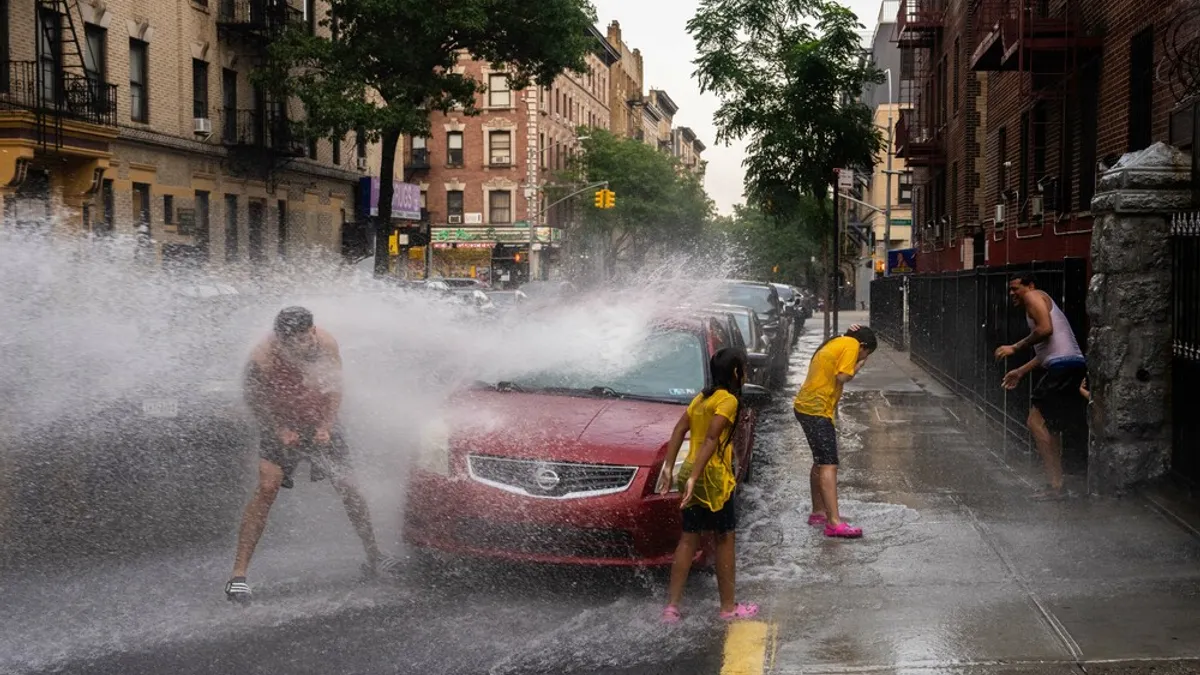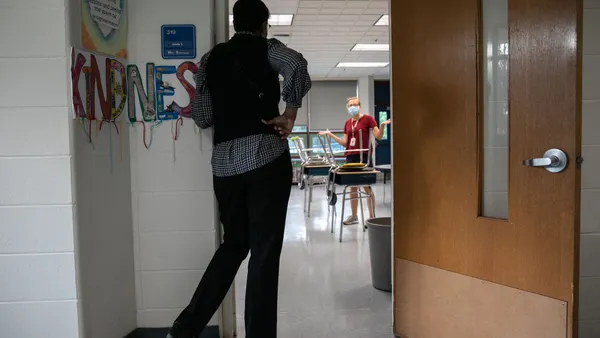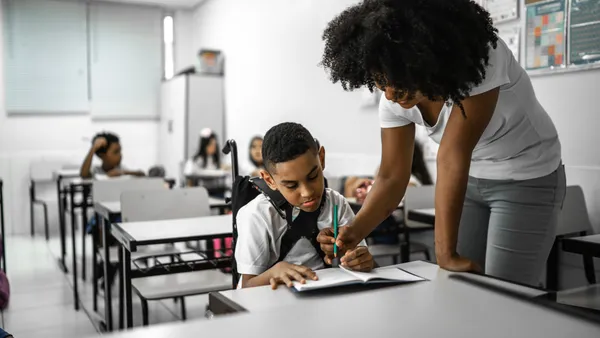Dive Brief:
-
Academic performance drops when temperatures rise, according to a study released Thursday by the NWEA. When test-day temperatures clocked over 80 degrees, students had lower math MAP Growth scores, the organization that administers the assessment found.
-
Extreme heat affects high-poverty students especially. The NWEA study found that high heat negatively impacted math scores up to twice as much for students in high-poverty schools than for those from low-poverty schools.
-
The study recommends educators set testing schedules around weather conditions when possible, create better testing conditions by moving testing to cooler areas and testing during the morning, invest in updated HVAC infrastructure, and ensure that districts' infrastructure planning takes into account high-poverty communities.
Dive Insight:
In 2020, over half of the nation's schools (54%) needed to update or replace multiple building systems or features in their schools, according to a report released by the Government Accountability Office. About 41% of public school districts needed to update or replace the HVAC systems in at least half of their schools, according to the report.
"If not addressed, such problems can lead to indoor air quality problems and mold, and in some cases caused schools to adjust schedules temporarily," the GAO report found.
At the same time, the school year is getting hotter.
Heat waves impact schools "seemingly everywhere," according to the Climate Action Campaign, including in Arizona, Georgia, Michigan and Wisconsin. In August, for example, schools in Portland, Oregon, closed early in anticipation of a heat wave, according to local reports.
And by this year, about 2,671 additional school districts were expected to log 32 or more days of weather over 80 degrees — the heat threshold where cooling systems are typically installed. That number of school districts is a 39% increase since 1970, according to a 2021 project by the Center for Climate Integrity.
Such climate changes impact academics, a finding confirmed by the NWEA study released Thursday.
It gathered data from nearly 3 million MAP Growth tests administered to students in grades 3-6 across six states between 2022 and 2024. The study found that on days hotter than 101 degrees, students' math performance was about 0.06 standard deviations below students who tested in 60 degree weather. The difference is about 10% of a 5th grader’s learning during a school year.
“Our findings show that as temperatures continue to rise, disparities in school facilities, such as having appropriate HVAC systems, can deepen existing inequities and make school infrastructure and building conditions significant issues of educational equity," said Sofia Postell, research analyst at NWEA, in a Thursday statement.
The findings expand on previous ones examining heat’s impacts on student achievement.
In 2020, a study published by the American Economic Association found that "heat directly disrupts learning time," and that without air conditioning, a school year hotter by 1 degree reduces that year's learning by 1%. The same study also found that hot school days disproportionately impact minority students, and even account for about 5% of the racial achievement gap.













